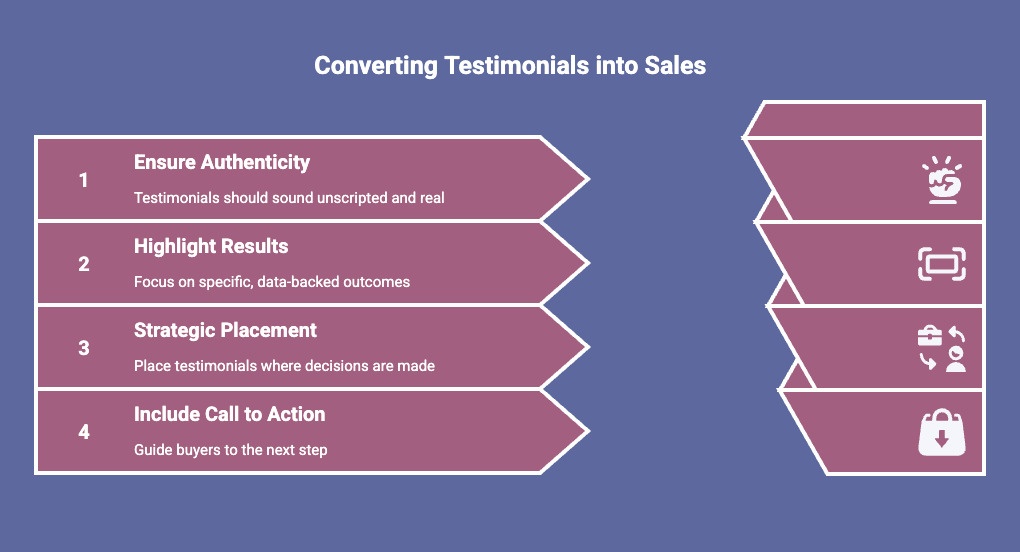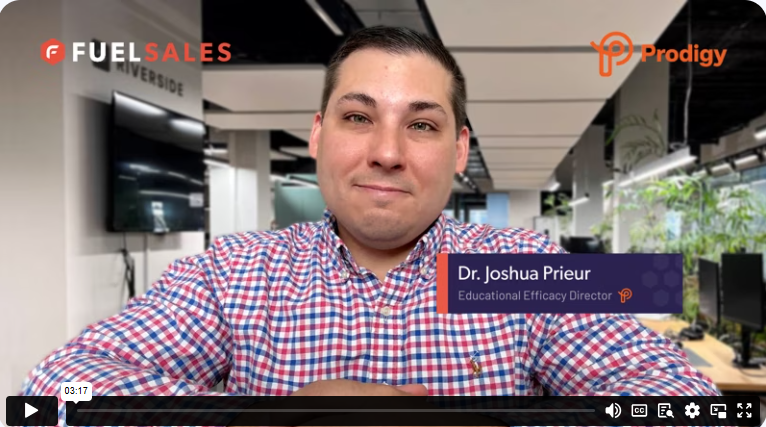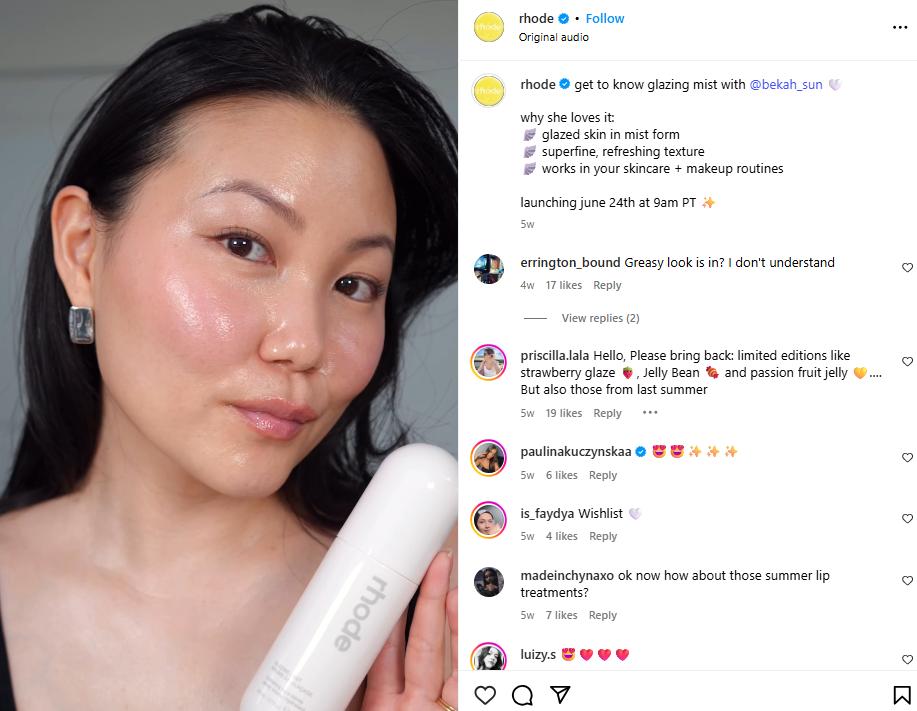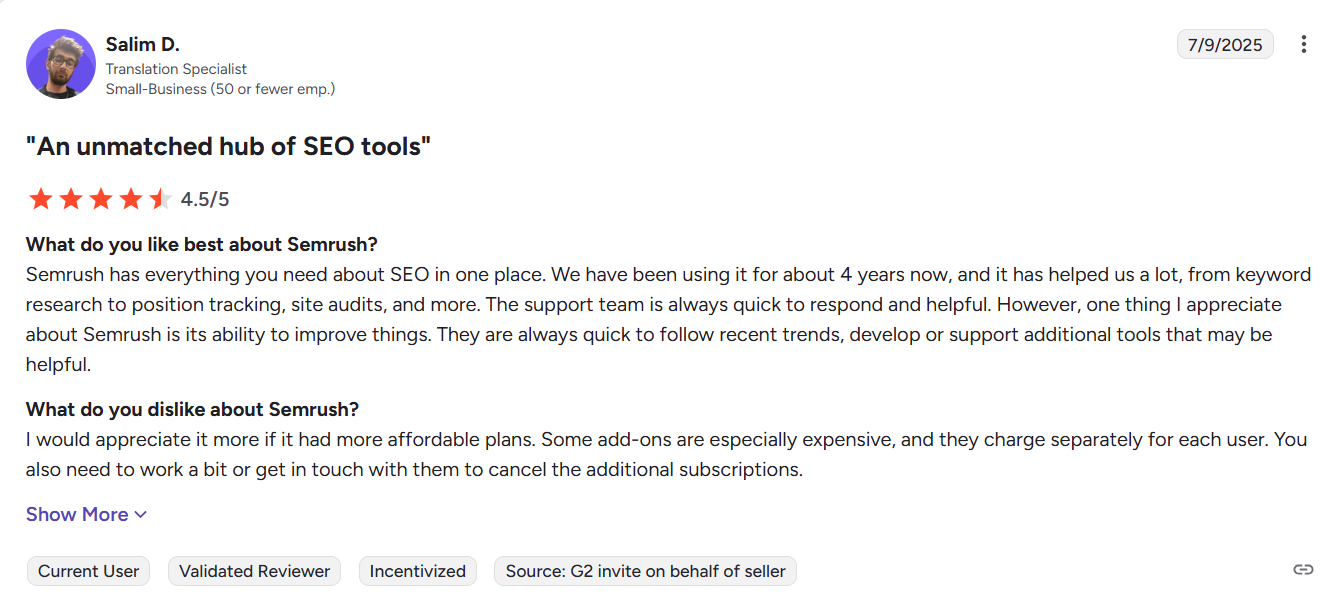How Does Testimonial Marketing Turn Customers Into Revenue?
By Nicolas Jacobeus on September 20, 2025
![]()
TL;DR
-
Buyers trust people, not brands. Real stories build faster credibility than polished product copy.
-
4 types that convert: written, video, UGC, and influencer. Each fits a different funnel stage.
-
It’s not about praise. It’s about proof. Specific wins like “cut churn by 40%” land harder than “great tool.”
-
Placement matters. Put testimonials near friction points like pricing pages, demo CTAs, or trial prompts.
-
Negative testimonials build trust, too. When framed with resolution, they show transparency and growth.
-
Short-form video wins. Repurpose one testimonial into Reels, LinkedIn clips, YouTube Shorts, and sales decks.
-
Scroll till the end to find 4 testimonial examples that just cut through as the best.
-
SaaSpirin handles it all. Customer interviews, copywriting, and ready-to-use assets. You focus on growth, not chasing clients.
Before we buy, we look for proof.
A review on G2. A LinkedIn comment. A quick testimonial video in a sales deck.
It doesn’t matter how polished the brand copy is; buyers want to hear it from people who’ve been there. People who solved the same problem, with the same frustrations, and came out the other side better off.
That’s why testimonials hit harder than product pages. They’re not just compliments. They’re evidence. Little stories of transformation that turn skepticism into trust and trust into revenue.
In this guide, we’ll break down why testimonials work, the different formats you can use, and how leading brands repurpose them into assets that close deals faster.
What Are Testimonials in Marketing?
Testimonial ads are exactly what they sound like: ads powered by real customer feedback instead of brand fluff.
We’re talking quotes, testimonial videos, screenshots, or short stories where actual users explain how your product solved a real problem. The catch? You don’t write the script; they do. You just frame it, polish it, and put it in front of the right people.
In the tech and SaaS world, that’s huge because no one believes your “industry-leading” copy or your 20‑second demo reel anymore. But when a RevOps manager says, “We cut churn by 40% after switching to this tool,” people pay attention.
Testimonial ads come in all shapes:
-
A LinkedIn ad with a bold client quote + logo
-
A video clip of a customer walking through how they use your product
-
A tweet screenshot embedded in a retargeting ad
-
A Google search ad that starts with a testimonial line
They’re not about vanity. They’re about proof. And in markets where buyers are comparing five tabs and 12 tools, the product with the most believable story usually wins.
What are the Types of Testimonials I Can Use?
Not all ads with testimonials hit the same. Some are quiet but confidence builders. Others are scroll-stoppers. Here are the four most effective types, and when to use them.
1. What are Written Reviews?
The classic. Whether it’s a glowing G2 quote or a one-liner from a customer email, written testimonials are low-effort and high-impact, especially when dropped in the right place.
Most of us check reviews before buying anything. In fact, written testimonials influence buying decisions more than discounts, because people trust people, not price tags.
Best for: landing pages, nurture emails, and retargeting ad copy.
Try this: Take a G2 quote, add your customer’s logo, and turn it into a clean LinkedIn single-image ad.
2. What are Video Testimonials?
Video is where trust gets personal. A customer talking through their actual workflow, showing how your product fits into their day, that hits way harder than any explainer video.
An article by Forbes says people remember 95% of what they see in a video (compared to just 10% of what they read). And nearly 80% say a testimonial video made them more likely to buy.
Best for: LinkedIn ads, sales decks, landing pages, demo follow-ups.
Want a shortcut? SaaSpirin turns your best customer wins into done-for-you written, video, and social-ready testimonials, without chasing clients, editing footage, or writing a single script. Your customers tell the story. SaaSpirin turns it into assets that convert.
3. What is UGC (User-Generated Content)?
UGC is raw, real, and ridiculously effective. We’re talking tweet screenshots, casual product walkthroughs, Slack shoutouts, anything your users share without being asked.
Best for: paid social, founder content, case study intros.
Try this: Turn a customer’s casual Slack comment into your next testimonial ad.
4. What are Influencer Testimonials?
Sometimes the best testimonial doesn’t come from a user; it comes from someone your audience looks up to. When it’s authentic, an influencer shoutout can lend instant credibility.
With influencer marketing now worth over $24 billion, even niche SaaS categories are tapping experts to build trust at the top of the funnel.
Best for: launches, vertical expansion, brand awareness.
Just skip the overproduced scripts. If it doesn’t sound real, it won’t convert.
Doesn't sound like something you'd want to explore? Try an alternative- What is and How to Write a Success Story (With Examples & Templates)
What’s the Difference: Testimonials vs. Endorsements?
They might look similar in your feed, someone saying nice things about a product, but testimonials and endorsements aren’t the same thing.
|
Feature |
Testimonials |
Endorsements |
|---|---|---|
|
Who it’s from |
Real customers |
Paid influencers or public figures |
|
Tone |
Authentic, experience-driven |
Promotional, often scripted |
|
Compensation |
None |
Usually compensated (cash/product) |
|
Trust factor |
High (peers > brands) |
Medium (depends on credibility) |
|
Legal requirement |
No disclosure needed (if unpaid) |
Must disclose payment or relationship |
|
Use case |
Ads, sales decks, case studies |
Top-of-funnel awareness, brand reach |
|
Best for |
Building trust, proof, conversion |
Driving visibility, fast reach |
Testimonials = Real Customers
These come straight from your users. No scripts, no contracts, just real experiences with your product. Think: a founder posting how your platform helped them cut churn. Or a customer review that becomes a quote card.
These are earned, not bought, and that authenticity is what makes them powerful.
Endorsements = Paid Partnerships
Endorsements come from influencers, celebrities, or public figures who are paid (or compensated in some way) to speak about your product. They might genuinely love it, but legally, they have to disclose that they were hired to say so.
You’ve seen it: “This video is sponsored by…”
So now that we know the difference between getting love vs. paying for it, let’s talk about how to actually make testimonial ads work.
What are the 4 Tips for Successful Testimonial Marketing?

Good testimonials talk. Great ones convert. Here’s how to make sure yours do both, especially in SaaS and B2B, where trust takes time and buying cycles are long.
1. Choose Testimonials That Sound Like Your Buyer
Skip the vague praise. Use testimonials that sound like something your actual prospects would say. A RevOps lead saying, “This saved us 10 hours a week” will land far better than “Great tool!”
In B2B, buyers are more likely to trust testimonials that feel unscripted. Real voice matters more than polished soundbites, especially when your audience is comparing three competitors on three tabs.
2. Make the Results Clear
Specific outcomes beat generic love every time. Instead of “We love it,” go for “We reduced churn by 18% in Q1.” That’s the kind of proof buyers can run up the chain.
Data-backed storytelling builds credibility fast, especially when it ties to common pain points like churn, onboarding time, or lead quality.
3. Place Testimonials Where Decisions Happen
Don’t just throw testimonials on a wall of logos. Put them where your buyers hesitate: pricing pages, demo request forms, comparison pages.
4. Always Include a CTA
A testimonial is not the end, it’s the setup. Once you’ve earned belief, guide the next move: “See the full case study,” “Book a call,” or “Try it free.”
A strong CTA turns trust into traction. Without one, it’s just a nice quote sitting there doing nothing.
And while you are at it, here are 10 Case Study Questions to Uncover Insights and Win Clients.
What are Some Testimonial Marketing Examples You'll Actually Want to Steal?
We’ve talked strategy. Now let’s see it in action.
From scrappy UGC to polished video case studies, 4 examples show a different angle on how social proof can be packaged, positioned, and pushed across channels for maximum impact.
Use these as inspiration, or as a benchmark for what you’re building next.
1. FuelSales & Prodigy Education

Testimonial format: Video + Written Case Study + Social Assets
Channel fit: LinkedIn, Sales Decks, Blog, Outreach Collateral
What they did:
FuelSales partnered with Prodigy Education to drive lead generation in the EdTech space. But they didn’t just deliver results, they turned those results into a powerful narrative.
With a testimonial video, a structured case study, and bite-sized social assets, FuelSales finally had the proof to match their performance.
Why this works:
-
Highlights measurable impact with a well-known EdTech brand.
-
Builds authority through client voice, not self-praise.
-
Assets were designed for real sales use, from decks to DMs.
Ad idea:
-
Clip from Prodigy’s video testimonial with quote overlay.
-
Headline: “How outsourcing helped Prodigy scale pipeline growth”.
-
CTA: “See how FuelSales drives commercial outcomes in EdTech”.
See the impact of a well-crafted success story? SaaSpirin managed the entire process, from initial interviews to delivering a selling-ready asset.
Want to achieve similar results? Schedule a chat on my calendar to discuss your needs.
2. Shopify’s Video Case Study on LinkedIn
Testimonial format: Video case study from a satisfied merchant
Channel fit: LinkedIn, YouTube, landing pages
What they do:
Shopify features real merchants on LinkedIn, showcasing specific wins like migrating from another platform, scaling internationally, or hitting revenue milestones. These videos balance polished production with genuine customer stories.
Why it works:
-
Uses real business results and peer credibility.
-
Targets merchants facing similar challenges.
-
Native LinkedIn placement means more trust and higher engagement.
3. SurveyMonkey’s Influencer Video Ad
Testimonial format: Branded narrative featuring a trusted voice + influencer-amplified UGC
Channel fit: Streaming, CTV, social media, and programmatic
What they did:
SurveyMonkey launched a wide-reaching campaign narrated by Giancarlo Esposito, compelling business leaders to “Ask the people. Listen to them…And then act.” It was part serious business pitch, part creative brand statement, and mirrored by UGC from TikTok and YouTube creators showcasing real uses of the platform.
Results:
-
#surveymonkey views shot from 200K to nearly 9 million in just four weeks on TikTok.
-
Campaign racked up over 710 million video views across platforms.
-
Brand CPC dropped 58%, while awareness and recall rose by 3–5%.
Why it works:
A powerful combination of trusted voice, clear messaging, and real-world UGC made this feel less like an ad and more like a movement.
4. Dropbox’s Journalism‑Style Case Study Teaser
Testimonial Format: Text/image teaser styled like an investigative story
Channel Fit: Facebook (organic and paid), LinkedIn feeds
What They Did:
Dropbox treated their case study preview like a mini-news article, no fluffy intro copy or flashy visuals. Instead, they led with a compelling narrative hook that piqued curiosity and felt like something you'd stop your scroll for. Only after the click would users discover the product angle. A simple testimonial quote or outcome line does the heavy lifting.
Why It Works:
-
Feels editorial, not “ad.” That lowers ad fatigue in social feeds.
-
Sparks curiosity and drives click-through, not with hype, but with story.
-
No need for high-budget video, text & minimal visuals can still build momentum.
Implementation Tip:
Use a bold teaser line like:
“How X used Dropbox to cut project delivery time in half.”
Pair it with a single customer quote or metric, then link to the full case on your blog or landing page.
Tired of Chasing Testimonials? There’s a Better Way
Creating great testimonial ads sounds amazing, until you try doing it manually.
You have to track down the right customer, schedule a call, collect a quote, polish the copy, edit the video, and adapt it to 5 different formats. All while juggling 20 other things.
That’s exactly what SaaSpirin was built for.
What SaaSpirin Actually Does:
-
Interviews your customers (no chasing or awkwardness).
-
Writes your case studies and testimonial posts.
-
Builds multi-format assets- video clips, quote cards, social snippets, all ready to use.
Whether you need something polished for your sales deck or a scroll-stopping quote for LinkedIn, we help you turn existing customer wins into shareable, trust-building content.
👉 Check out SaaSpirin if you’re ready to finally put those customer stories to work.
Frequently Asked Questions
What are the best ways to use testimonials in email marketing?
To use testimonials in email marketing, embed short quotes or testimonial video clips in nurture emails, onboarding sequences, or re-engagement campaigns. This shows social proof in real time. It’s a powerful way to convert prospective customers with minimal friction.
What strategies can I use to maximize the impact of customer testimonials in my advertising?
Use customer testimonials that match your target audience's pain points. Add them to landing pages, social media posts, and paid ads. For testimonial marketing strategy success, keep quotes specific, results-driven, and visually engaging with video snippets or quote cards.
How do financial advisors benefit from testimonial marketing?
Testimonial marketing helps financial advisors build trust and credibility. Sharing real customer experiences shows positive outcomes and professional guidance. With compliance in check, testimonial video marketing is a powerful tool to attract potential buyers and increase referrals.
Are there tips for encouraging customers to provide authentic and compelling testimonials?
Ask at the right moment, after a successful milestone or positive experience. Use testimonial tools or software that make it easy to record responses. To get powerful testimonials, guide them with soft prompts and make the process frictionless.
What are some mistakes to avoid when using testimonials in marketing?
Avoid vague or overly generic reviews. Never fake testimonials. Don’t forget to match the testimonial with the right audience segment. And make sure you’re complying with legal rules, especially if you're exploring paid or experiential marketing testimonials.
How can video testimonials improve my testimonial marketing results?
Video testimonials feel more human and are more trusted than text alone. They capture tone, emotion, and real faces. A great video testimonial can dramatically increase time-on-page and conversion rates across your marketing campaigns and sales assets.
What legal or ethical considerations should I keep in mind when using customer testimonials?
Always get written consent. If offering compensation, follow disclosure guidelines. Ask: does the marketing rule allow paid testimonials in your industry? If not, stick to authentic, voluntary feedback to keep your testimonial advertising both compliant and credible.
How can I use testimonials in my marketing and sales efforts?
Repurpose testimonials across your funnel. Use video clips in social platforms, quotes in email campaigns, and PDF stories for sales decks. Knowing how to use testimonials in marketing unlocks a powerful way to earn trust and close deals faster.
What is better, feedback or testimonials?
Feedback helps you improve internally, but testimonials sell your service. A customer testimonial focuses on the outcome, not just the experience. Both are valuable, but testimonials are more effective for marketing efforts and attracting potential customers.
How do you get clients to give you testimonials?
Time it well, after the success moments. Offer multiple ways to respond: email, video, or call. Show examples of testimonials for social media marketing agencies to inspire them. A satisfied customer is often happy to share their story if asked clearly.
You May Also Like
These Related Stories
How Does Testimonial Advertising Turn Customers Into Revenue?
.png)
Reviews and Testimonials: What’s Costing You Leads in 2025?




